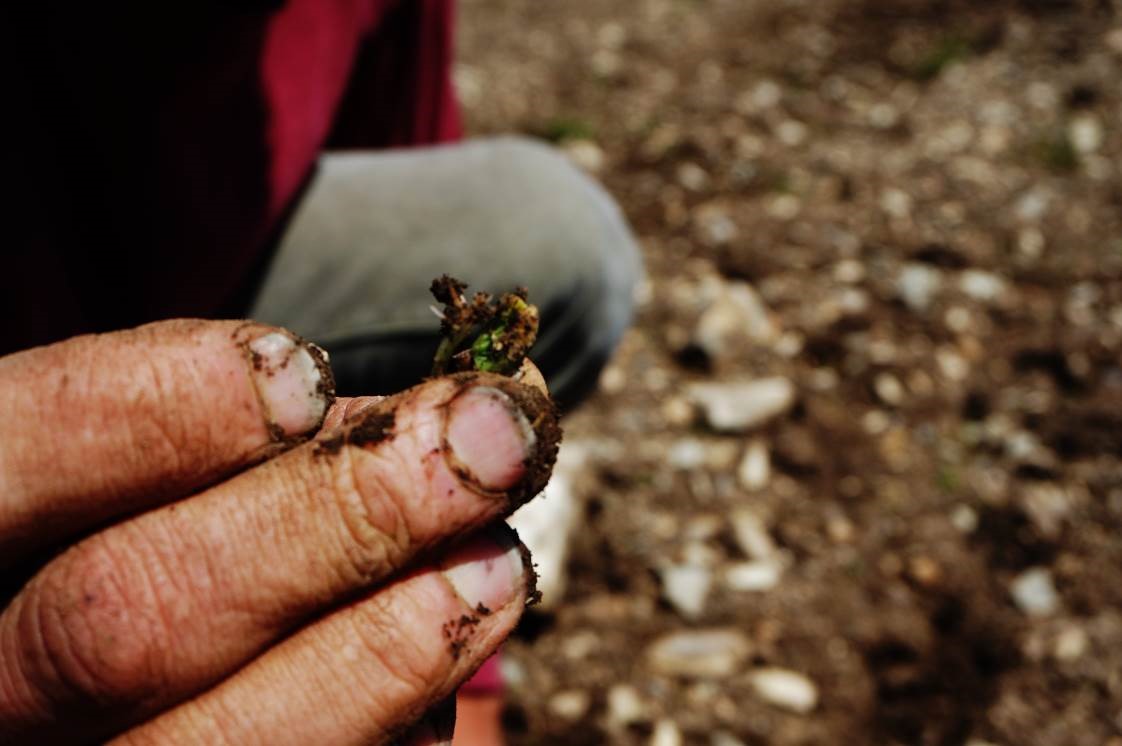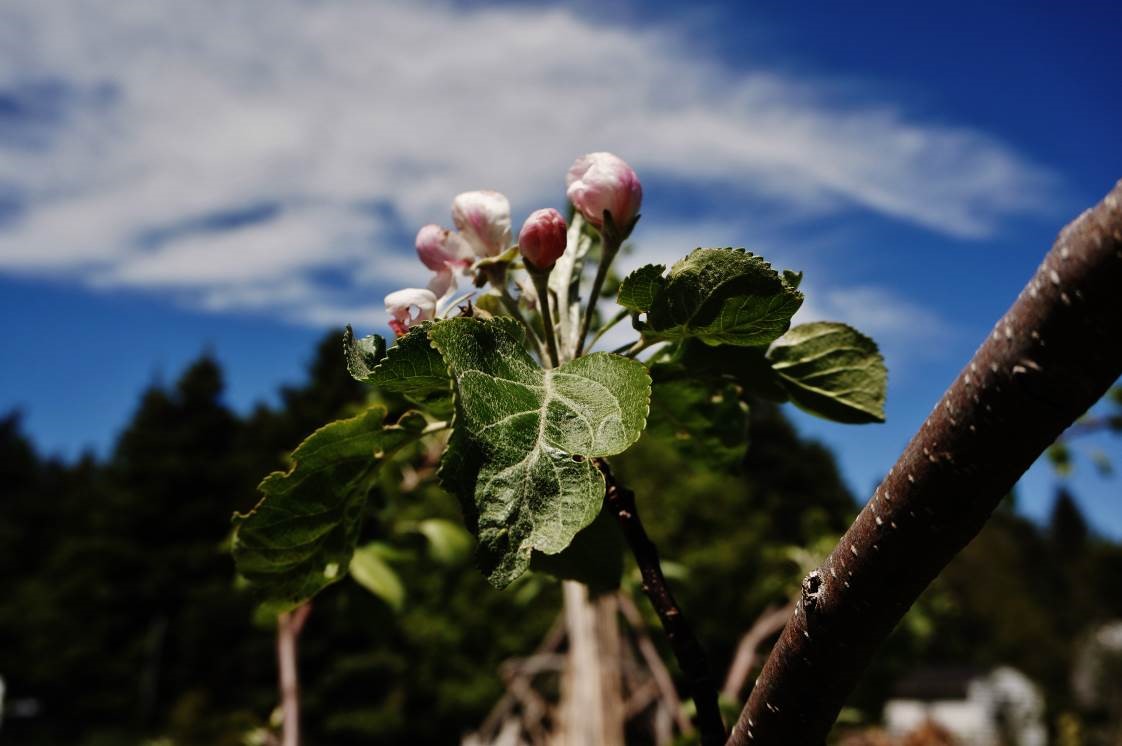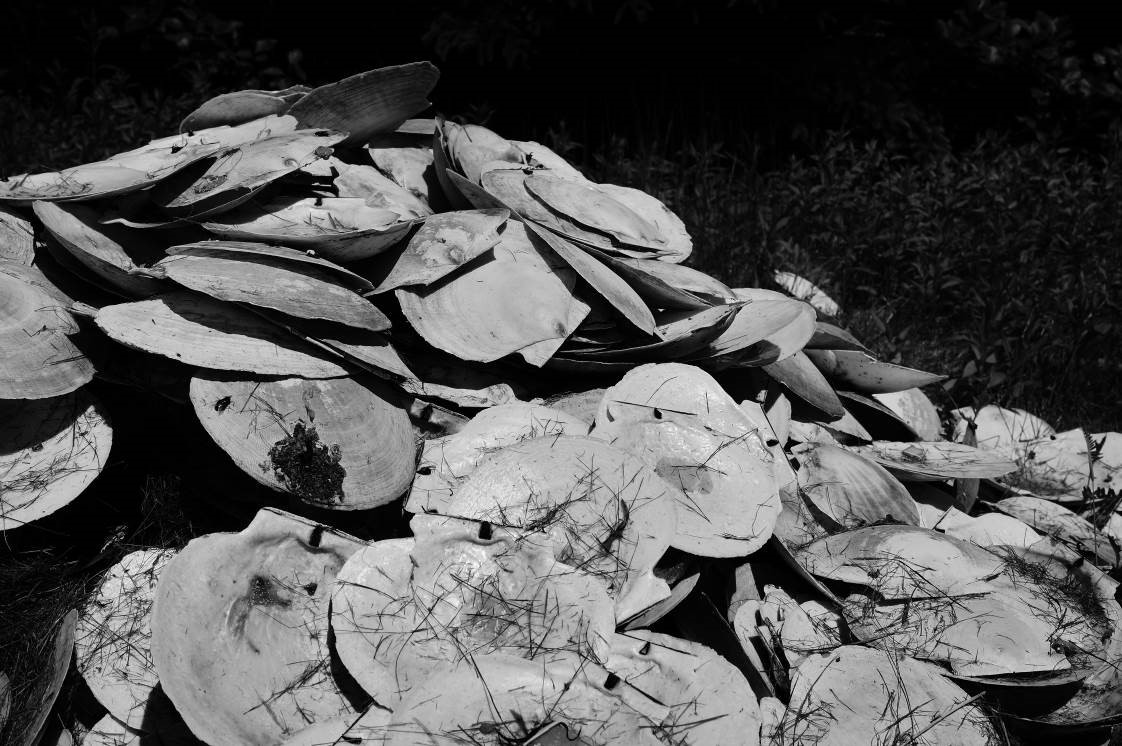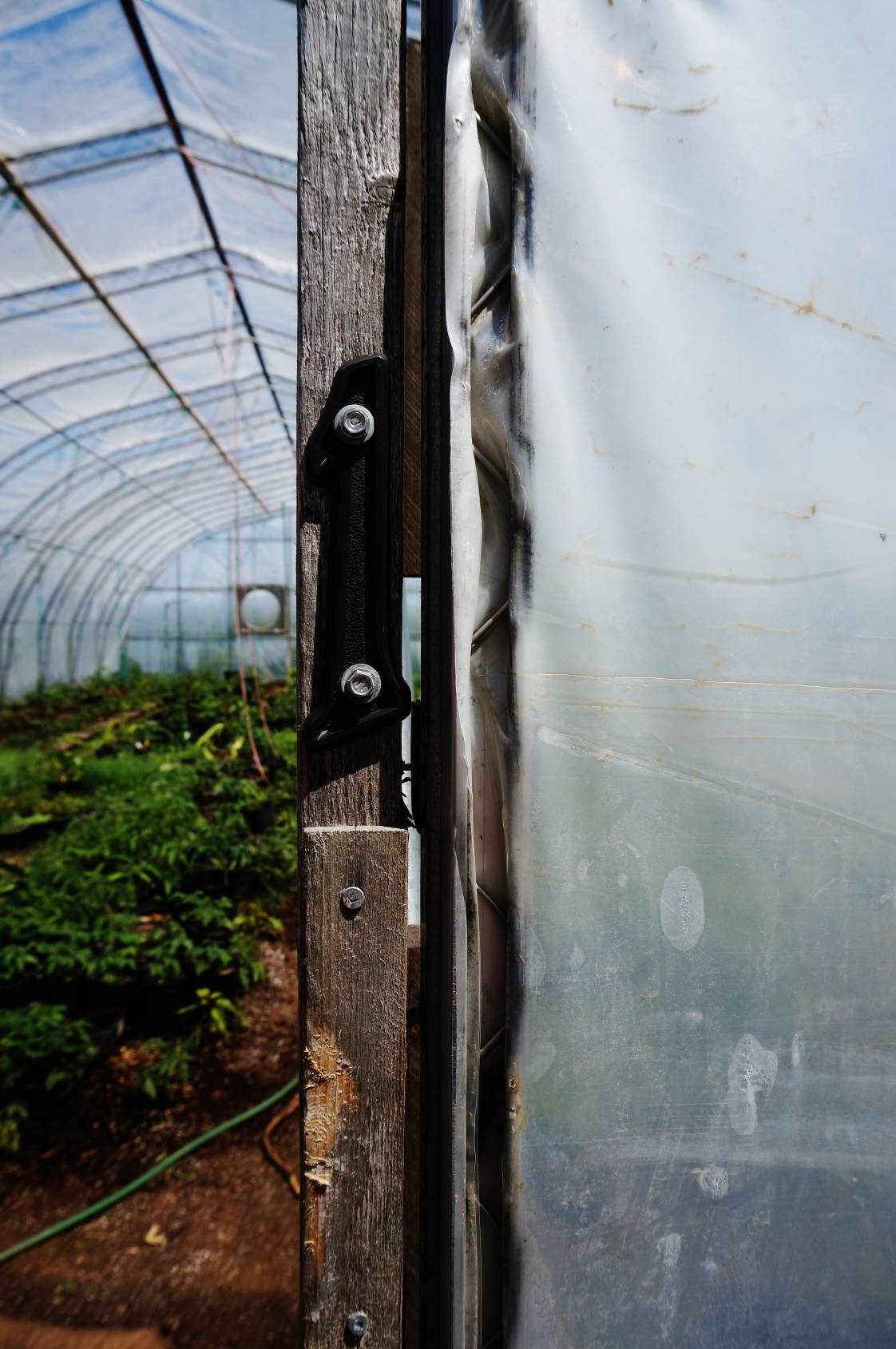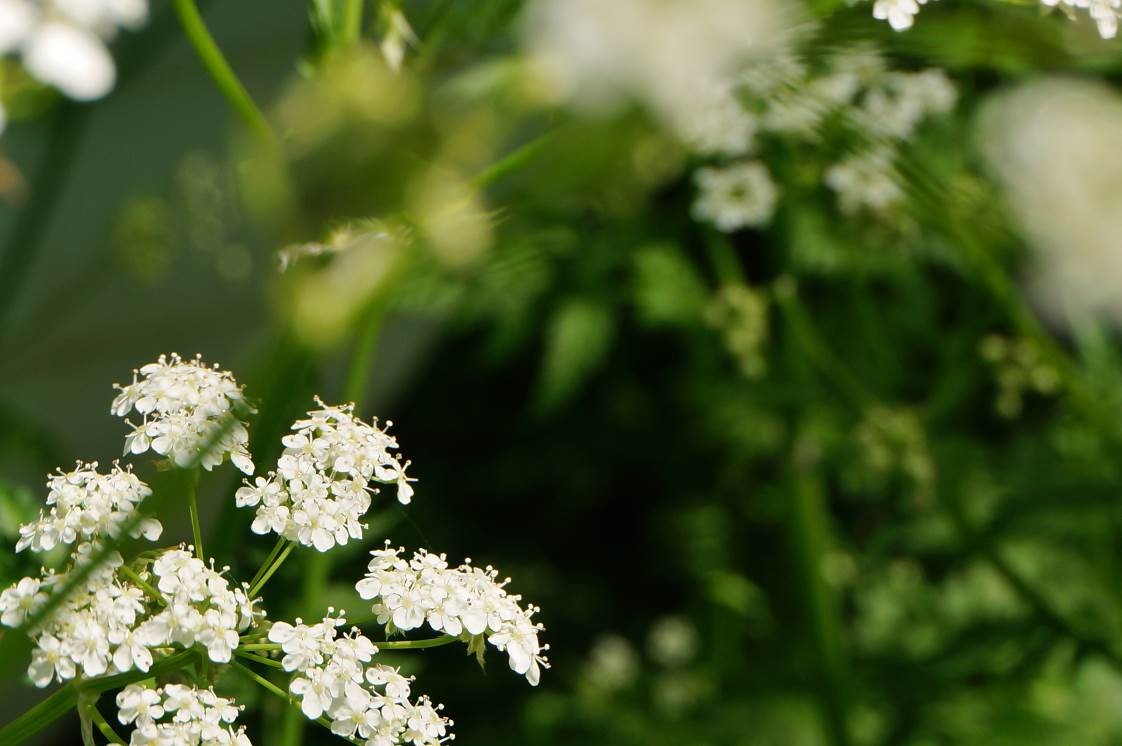This post is the fifth in a series that Sarah Campbell, an intern with FSN, is doing around the International Year of Family Farming this summer, gathering stories of family farming from around the Avalon Peninsula. Look for more stories in the coming weeks!

A couple of weekends ago I had the pleasure of going out to the Murray Farm to speak with Evan Murray and Brian Kowalski of Murray Meadows Farm, a one-acre parcel on sixty-five acres of land, primarily used to grow for Murray's Garden Centre. Evan met me at the Garden Centre, and pointed me up the hill to the Murray Meadows plot – past the family home, a series of greenhouses filled with Garden Centre growth, and a reservoir. I came upon a plot full of rows of vegetables, and full of greenhouses – five in total, strapped to the ground, and to each other, with a multitude of fabric straps.
Brian met me in the fields – hoe in hand, in search of medication for his allergies (acting up of late) – and walked me around, showing me kale (a veritable forest); cabbage (which should have headed up about a week earlier); flowers (he hopes to have a florist up to the farm to take a look sometime); leeks (they needed to be hilled soon); garlic (whose scapes needed to be picked); tomatoes (the first one was almost ripe!); radishes, gone to seed (he wondered if I wanted to try a seed pod? Radish-y!); and much, much more. I picked the rest of the garlic scapes that needed picking and Brian offered some carrots and kale in return (a rule on the farm, to make sure everyone who does some work goes home with something in hand).
Clover; cabbage; radishes, gone to seed
Afterwards, I headed down to the Garden Centre, where Evan was working for the day (someone had called in sick and they were short of hands). We sat in the back room and talked for almost an hour about the farm and about the business of farming at Murray Meadows – you can listen to that conversation below. He painted a picture of a family farm passed down through the generations, over the past two hundred years. Evan's grandfather farmed animals and vegetables, and his father, vegetables as well, later transitioning to growing annual and perennial 'floriculture products' for the Garden Centre. Evan and Brian are returning to the growing of food which has become more possible due to a renewed interest in, and market for, local food in the province.
The philosophy of farming that Murray Meadows undertakes to put into practice, as Evan explained it to me, is one of “intensive growing.” This means, for him, that he and Brian “try to generate as much as we possibly can on a one-acre parcel.” That's not a lot of land, “but,” he says, “we try and turn over that one-acre parcel at least two, or sometimes even three, times for each square foot of area that we have.” They grow “short season crops that we can get multiple yields out of,” and implement various season extension techniques. The people Brian and Evan look to for guidance in this endeavour are Eliot Coleman, “the grandfather of market farming,” who writes about techniques for growing in cold climates (himself harvesting out of Maine), and Wally Satzewich and Gail Vandersteen, writing out of Saskatchewan, who advocate for a method of growing they call SPIN (Small Plot Intensive) farming, a planning-intensive model which works to ensure maximal production and the most efficient turnover of crops possible.
The skeletal frames of the greenhouses
Perhaps my favourite part of the conversation was about the potentially arcane, potentially mundane – but incredibly essential – subject of greenhouses. “The climate of [the province],” as Evan points out, “is not conducive to a high turnover of crops without some sort of protection.” Greenhouses extend the growing season by providing a higher temperature, and protect plants from the wind – which can stunt plant growth in the province. Brian showed me the difference between a tomato plant – up to his elbow – in the greenhouse, and one – up to his knee – planted at the same time out in the field. But the concern with greenhouses, at least here, is the wind. Picture trying to get a hundred foot piece of plastic off of a metal frame in the middle of the winter in the middle of a snowstorm at midnight so the wind doesn't catch said frame and pull it down into a unsalvageable pile of twisted metal, and the problem begins to be clear. Evan attended a conference devoted to greenhouses in Corner Brook back in the spring, hosted by the NL Horticultural Producer Council. He's considering trying some of the structures he heard talked about there to adapt greenhouse growing to the province's weather – structures with frames constructed so that when they fall, they simply fall down, without the damage to the metal, and can be put back up. It’s something to consider for the future. For the moment they’ll carry on with straps, between greenhouses, and to the ground, which can be tightened to quell the shaking of the structures in the midst of a strong wind.
You can find Evan and Brian's food at the St. John's Farmer's Market which runs every Saturday from 9am until 2pm, June-October, as well as in the cooler at Murray's Garden Centre (1525 Portugal Cove Rd.), and through their CSA program (full for this year).
To follow the farm throughout the season, you can go to the farm's Facebook page, which is updated regularly with photos, news, and tales of the first tomato.
[soundcloud url="https://api.soundcloud.com/tracks/162813017" params="auto_play=false&hide_related=false&show_comments=true&show_user=true&show_reposts=false&visual=true" width="100%" height="150" iframe="true" /]
[soundcloud url="https://api.soundcloud.com/tracks/162813011" params="auto_play=false&hide_related=false&show_comments=true&show_user=true&show_reposts=false&visual=true" width="100%" height="150" iframe="true" /]
The Newfoundland tricolour, doubling as a wind-vane
[soundcloud url="https://api.soundcloud.com/tracks/162813012" params="auto_play=false&hide_related=false&show_comments=true&show_user=true&show_reposts=false&visual=true" width="100%" height="150" iframe="true" /]
[soundcloud url="https://api.soundcloud.com/tracks/162813009" params="auto_play=false&hide_related=false&show_comments=true&show_user=true&show_reposts=false&visual=true" width="100%" height="150" iframe="true" /]
[soundcloud url="https://api.soundcloud.com/tracks/162813014" params="auto_play=false&hide_related=false&show_comments=true&show_user=true&show_reposts=false&visual=true" width="100%" height="150" iframe="true" /]
A field of kale; beans; Brian, hoeing
[soundcloud url="https://api.soundcloud.com/tracks/162813015" params="auto_play=false&hide_related=false&show_comments=true&show_user=true&show_reposts=false&visual=true" width="100%" height="150" iframe="true" /]
[soundcloud url="https://api.soundcloud.com/tracks/162813010" params="auto_play=false&hide_related=false&show_comments=true&show_user=true&show_reposts=false&visual=true" width="100%" height="150" iframe="true" /]
Thanks Brian! Thanks Evan!








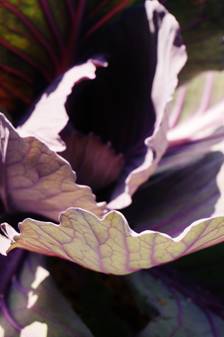

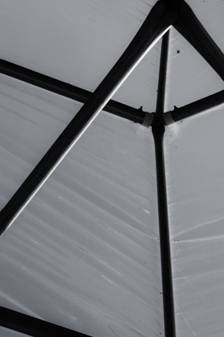
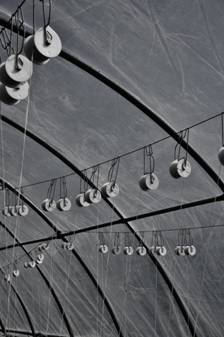







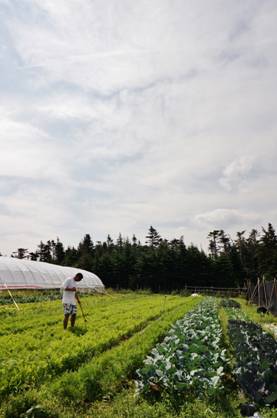



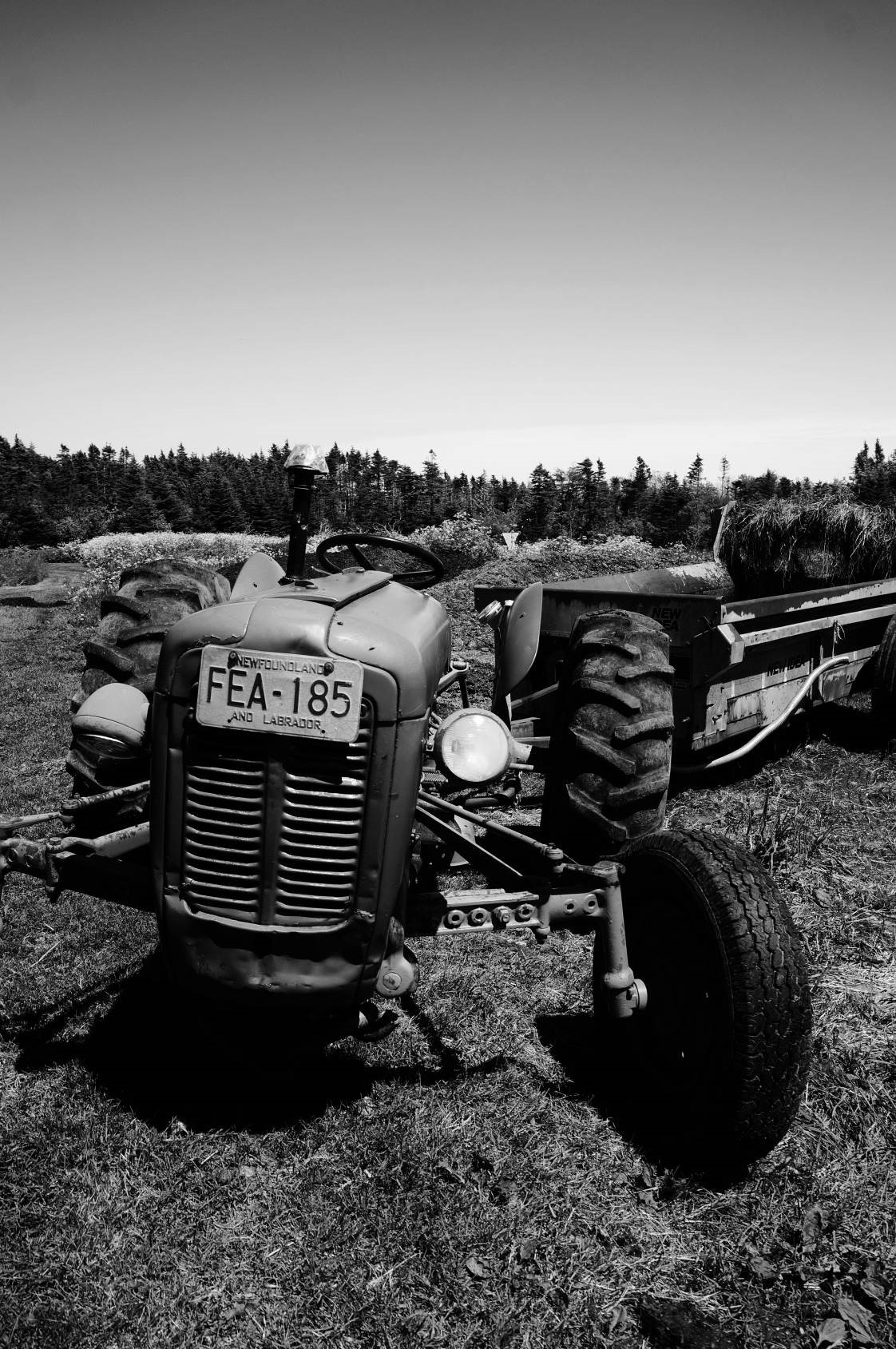 Last weekend I was happy to be able to speak with Jeremy Carter of
Last weekend I was happy to be able to speak with Jeremy Carter of 
